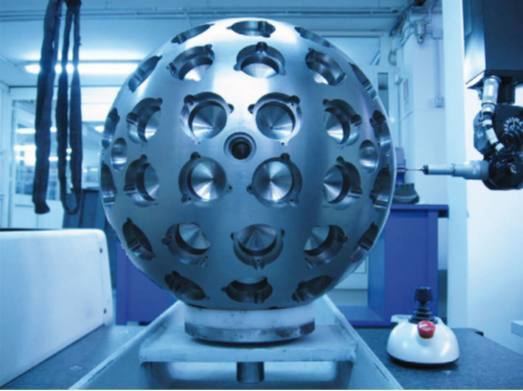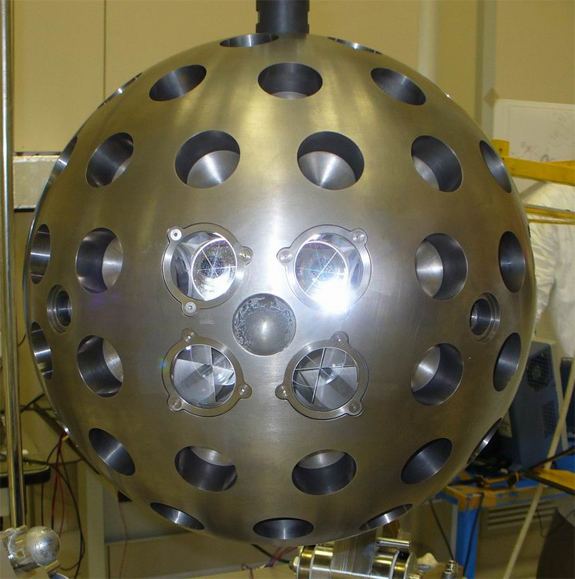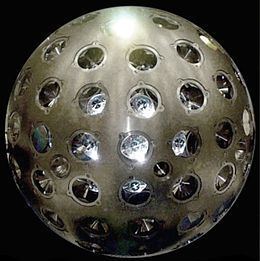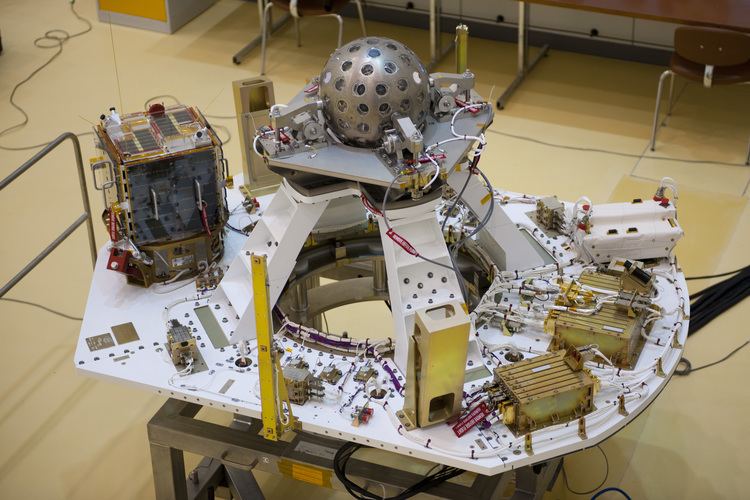Operator ASI SATCAT no. 38077 Inclination 69.49° Launch mass 386.8 kg Apogee 1.451 million m | COSPAR ID 2012-006A Inclination 69.49° Period 1.9 hours Launch mass 386.8 kg Launch date 13 February 2012 | |
 | ||
Mission type Laser ranging satelliteTest of GR Dimensions 364 millimetres (14.3 in) | ||
LARES (acronym for Laser Relativity Satellite) (COSPAR ID 2012-006A) is an Italian Space Agency scientific satellite launched from the ESA Guiana Space Centre of Kourou, French Guiana, by the maiden flight of the European launch vehicle Vega on 13 February 2012.
Contents

The LARES satellite is the densest known object orbiting in the Solar System.
Mission

The satellite, completely passive, is made of tungsten alloy and houses 92 cube corner retroreflectors that are used to track the satellite via laser from stations on Earth (satellite laser ranging). LARES's body has a diameter of about 36.4 centimetres (14 in) and weighs about 400 kilograms (882 lb). LARES was inserted in an orbit with 1,450 kilometres (901 mi) of perigee, an inclination of 69.5 degrees and reduced eccentricity. The satellite is tracked by the International Laser Ranging Service stations.
Scientific goals

The main scientific target of the LARES mission is the measurement of the Lense–Thirring effect, also known as frame-dragging, with an accuracy of about 1%, according to its proponent, Ignazio Ciufolini (Principal Investigator of the mission), and the LARES Scientific Team. The reliability of such an estimate is currently debated. An analysis of 3.5 years of laser-ranging data has been reported with a claimed accuracy of about 4%.
The LARES satellite may also be used for measurements in the fields of geodynamics and satellite geodesy.


